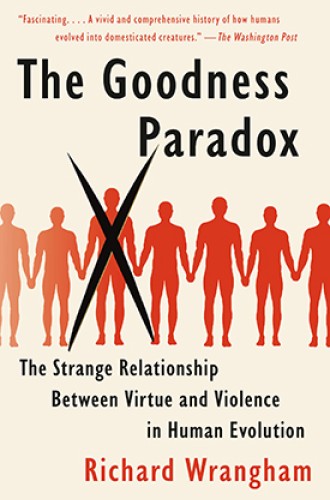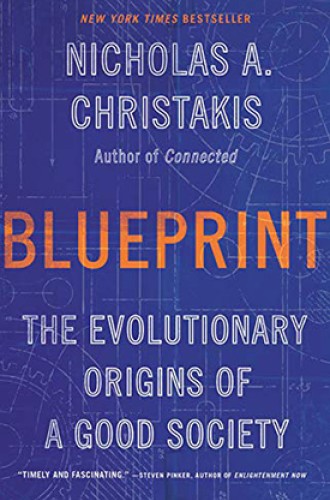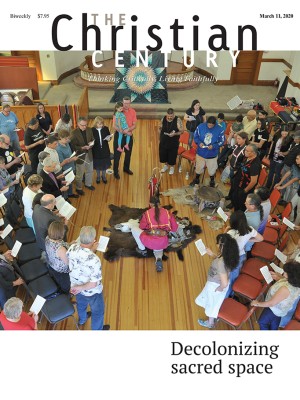It’s hard to be an optimist about human nature if you pick up a newspaper, follow social media, or just stand outside a playground and watch kids pick fights. Nevertheless, both Richard Wrangham and Nicholas Christakis argue that human nature isn’t nearly as bad as it appears.
Wrangham is an anthropologist at Harvard who has devoted his life to studying the origins, biology, and behavior of primates. In a chapter called “The Evolution of Right and Wrong,” he debunks the selfish gene theory, which insists that all acts of altruism are determined by genetics. Wrangham counters this view not on philosophical grounds or with moral arguments but by summarizing several experiments in which the subjects tempered their selfishness with empathy and generosity. The heart of this chapter is a speculative but plausible account of how isolated acts of generosity can be transformed, by a kind of social alchemy, into universal habits of mutual aid.
Read our latest issue or browse back issues.
The key to this transformation is the human propensity to reward and—even more important—to punish others for their actions. We have evolved into a species in which killing is rare, argues Wrangham, precisely because men (the gendered pronoun is intentional here) have come together to identify and execute other men who use violence to get what they want. The result, despite what happens in war zones and on playgrounds, is that human societies are remarkably peaceful. Physical aggression among our closest primate relatives, he relates, is 100 times more frequent than in human societies.
To support this startling conclusion, Wrangham leaps from paleobiology to neuroscience, from histories of war to ethnologies of hunter-gatherers, from the earliest hominid fossil records to genetic engineering. His argument is built on a distinction between two kinds of violence in the animal kingdom: reactive aggression, which is triggered by an attack or an affront to an individual’s social position, and proactive aggression, which he defines as the deliberate infliction of harm, “a purposeful attack with an external or internal reward as a goal.”
Among nonhuman primates, reactive violence prevails. Apes and monkeys, males in particular, spend much of their time fighting against real or perceived threats. Humans are more likely to overlook or excuse than to avenge others’ slights. Put a hundred chimpanzees on an airplane, an anthropologist has observed, and chaos would prevail. Among a hundred human passengers, quiet reigns.
But human beings surpass all others in the use of proactive aggression, facilitated by our vastly greater capacity for communication and social coordination. Such violence is often aimed at outsiders, in wars for conquest or glory. But the key to cooperation is the aggression we direct toward disruptive individuals in our community. In punishing wrongdoers, Wrangham argues, our ancestors set the stage for peaceful societies to emerge.
What happened as a result, on Wrangham’s account, is that Homo sapiens became domesticated. Early humans learned to domesticate cattle and sheep and dogs and cats by selecting for desired traits. Compared to their relatives in the wild, domesticated animals are more docile, less prone to either reactive or proactive aggression, and—in an evolutionary development that is widely evident but difficult to explain—marked by anatomical traits such as smaller teeth, shorter faces, a more globular but smaller brains, and different coloring.
The key to human cooperation, Wrangham argues, is that we have effectively domesticated ourselves. The earliest human societies understood that eliminating the most disruptive individuals was necessary in order to make life tolerable for others. Because the genes that dispose humans to reactive aggression were gradually removed from the available pool, Homo sapiens became a peaceable species.
Wrangham’s theory is intriguing, but he never resolves the paradox that he states at the outset: “A great oddity about humanity is our moral range, from unspeakable viciousness to heartbreaking generosity. From a biological perspective, such diversity presents an unsolved problem. If we evolved to be good, why are we also so vile? Or if we evolved to be wicked, how come we can also be so benign?” This question remains for the theologians and philosophers.
In Blueprint, Yale physician and social scientist Nicholas Christakis dances around the same paradox at great (and sometimes numbing) length. I can’t recall any book with such numerous and disparate findings from biology, anthropology, history, and game theory. Christakis’s goal is to demonstrate that cooperation and mutual aid are deeply rooted in our biological identity. Humans are capable of unspeakable horrors, indeed, as are other animals. But our genetic identity, shaped by millions of years of evolution—the “blueprint” of the title—has made us inherently social animals.
Christakis begins with a history of shipwrecks, since they produce “unintentional communities” in which we can study the origin and development of social institutions in isolation. After enumerating all the documented shipwrecks of the 16th through the 19th century with long-term survivors, the author devotes the rest of the chapter—one of the most gripping in the book—to an analysis of how different relationships among those marooned together led to radically different outcomes.
For example, two ships broke up on opposite sides of Auckland Island in the South Pacific in 1864, but the survivors’ subsequent fortunes could hardly have been more different. In one group, 19 sailors and officers reached shore but only three men, all officers, were alive a year later. One man was left to die immediately, and most of the others starved when the officers hoarded the available food. In the other group, only five men made it to shore. They immediately began to hunt and fish collaboratively, forsaking the hierarchy of the ship. All five lived and were rescued two years later. Here we find historical confirmation that readiness to cooperate can preserve lives.
It would take many pages to summarize all of Christakis’s evidence. He cites social interactions that emerge in simulated games of competition and cooperation, and he discusses the patterns of friendship and assistance anthropologists have studied in communities in Sudan, Tanzania, Uganda, and Honduras. He considers the behavior patterns of chimpanzee communities in East and West Africa, social networks among pigtailed macaque monkeys, the distinctive web styles of 50 species of spider, the Asian “zombie ant” whose nervous system is hijacked by a parasitic fungus, and the social structures revealed by fossilized elephant tracks.
These disparate phenomena provide support for Christakis’s most sweeping and most arresting claims: that human beings are social by nature, that humans exceed all other species in this regard, and that this trait is engraved in our genetic identity, thanks to eons of evolutionary changes. The story he recounts has some similarities to Wrangham’s theory of “selection by execution.” But for Christakis the capacity to punish—which he documents from game theory models—is only one of many human traits that has helped to make us a less competitive and less violent species than any of our near relatives.
A profusion of examples from non-human species (including bower birds, spiders, Siberian foxes, mice, snails, and fungi) advances Christakis’s claim that behavioral traits have a biological basis. Genes not only shape our bodies and our behavior, Christakis argues, they also indirectly construct the world around a species.
Digging deep into the paleontological record, Christakis finds evidence that social behaviors prevailed in the earliest human societies. The reason we had to learn to cooperate and to resolve most conflicts without violence is simply that the greatest dangers to our safety came not from predatory carnivores but from fellow humans. Citing Wrangham’s thesis about humans’ self-domestication, Christakis observes: “Even in the past few thousand years, the tendency toward less aggression has sped up. . . . While as much as a third of humans during the Paleolithic period died from intentional violence, only about one out of a thousand people in even our most violent communities die from it today.”
Christakis ends his study with far more questions than answers. How will gene editing shape the future of humanity? What differences will artificial intelligence make to our social lives? There are “ancient and powerful forces . . . at work, propelling a good society,” and yet we have “both competitive and cooperative impulses, both violent and beneficent tendencies.” Wrangham’s concluding remarks strike a similar tone: “The one guarantee that an evolutionary analysis can offer . . . is that it will not be easy for fairer and more peaceful societies to emerge. They will take work and planning and cooperation.”
Neither author calls for optimistic confidence about the bright future of humanity. But both offer grounds for hope that we can build cooperative institutions for which our genes, our evolutionary past, and our social history have prepared the way.








